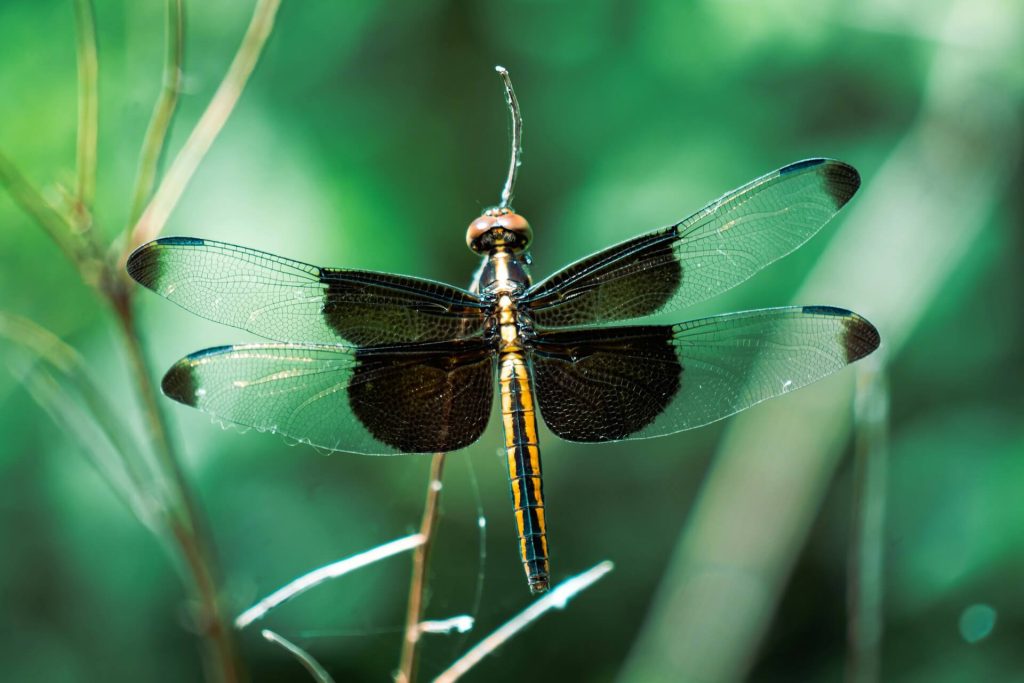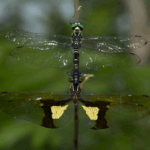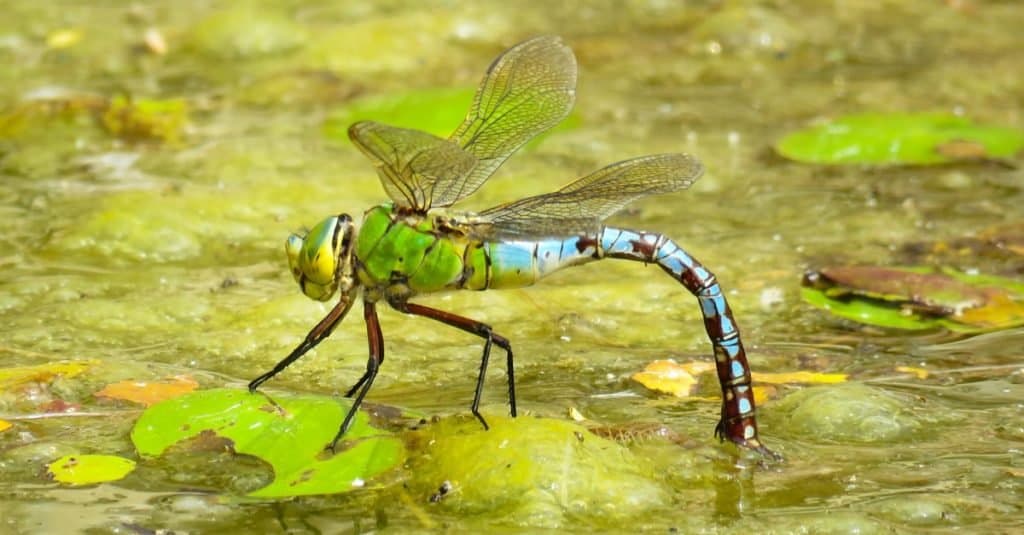
Why are they called Dragonflies?
Possibly the earliest reference to the name is from Francis Bacon’ Sylva Sylvarum: or a Naturall Historie in Ten Centuries, a curious hotch-potch of experiments, observations, speculations, ancient teachings, and analytical discussions on topics ranging from the causes of hiccups to explanations for the shortage of rain in Egypt. It was artificially divided into ten chapters, each consisting of one hundred items and was published in 1626, where he first used the common name “Dragon-fly”. At a guess, Bacon had picked up on a folkloric name of that time. Prior to this date (and since) many different vernacular names have been used, including the English names Adder Bolt, Snake Doctor, Devil’s Riding Horse, Horse-Stinger and Devil’s Darning Needle.
There is an excellent paperback called “Spinning Jenny and Devil’s Darning Needle” by M. Jill Lucas which has a great deal about dragonfly folklore.
Where did the name ‘dragonfly’ originate?
Answer: We have not been able to find a definitive answer to this question. One interesting theory about its origin, however, can be found in a book written by Eden Emanuel Sarot in 1958 entitled Folklore of the Dragonfly: A Linguistic Approach. He theorized that the name dragonfly actually came about because of an ancient Romanian Folktale. In the folktale, the Devil turned a beautiful horse ridden by St. George (of St. George and the dragon fame) into a giant, flying insect. The Romanian names the people supposedly refed to this giant insect (when translated into English) mean ‘St. George’s Horse’ or, more commonly, ‘Devil’s Horse.’ According to Sarot, the peasantry of that time actually viewed the Devil’s Horse as a giant fly and that they may have started referring to it as the ‘Devil’s Fly’ (instead of Devil’s Horse). He stated that the Romanian word for Devil was “drac,” but that drac was also the Romanian word for dragon. He thought that eventually the Romanian name for the Devil’s Fly was erroneously translated to the English Dragon Fly and this eventually evolved into the “dragonfly!”
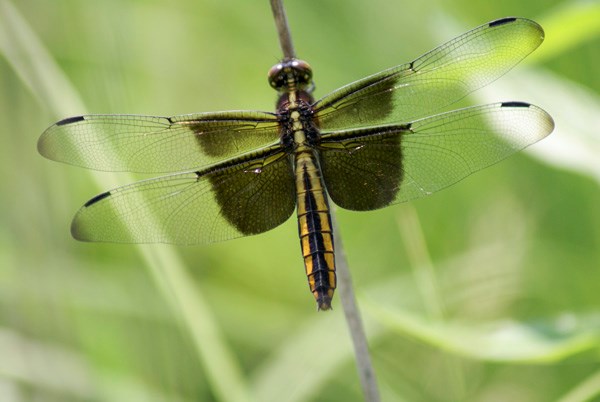
How did the dragonfly get its name?
Dragonflies are one of the most fascinating insects. They have a very distinct appearance with their wings and long body. As a predator, they eat many insects that might plague your home and yard, including mosquitoes, houseflies, ants and bees. However, the origin of their name is a bit of mystery. The origin is not definitive, but there are many wonderful folklore stories to explain the origin of the name.
Romanian Folklore
In old Romanian folklore, the dragonfly was actually a horse ridden by Saint George. St. George rid the mythical town of Silence of the dragon that lived in the town’s pond and poisoned the town. After wounding the dragon, he leashed the dragon and gave it to the town’s princess. Saint George’s horse became a giant flying insect when cursed by the devil. In the Romanian language, the word for dragonfly translates into Devil’s Horse or Devil’s fly. The Romanian word for devil is drac, which can also indicate dragon. In English, it translated to dragonfly.
Native American Folklore
For the Zuni tribe, dragonflies are a symbol of spring and good harvests. It is said that the Zuni abandoned their land when it became barren. In their haste to leave, they left behind a small brother and sister. The brother created an insect doll made from grass and corn, which came to life. As the children suffered from hunger, the doll flew away to find the corn maidens. With the corn maidens came the return of the fertile land and the tribe. The insect doll asked for a companion. Their offspring were called dragonflies from then on to today.
Swedish Folklore
In ancient Swedish folklore, the dragonfly is called Skams besman, which translate to Devil’s Steelyard. This name is derived from the shape of a dragonfly’s body. If you use a little imagination, its body shape begins to resemble a weighting tool. The people believed that the Devil used the dragonfly to weigh people’s souls. The dragonfly would circle a person to get the measure of their soul. If your soul was found wanting, you could expect to be seriously injured in the near future. Today, dragonflies are considered holy animals in the Scandinavian countries.
While we might never know the true origins of how the dragonfly received its name. It is fun to learn more about the possible origins of the name and the folklore associated with this insect.
Dragonflies were widely used in folklore throughout the world and it was believed that they once were dragons.
For example, in Romanian folklore the dragonfly was Saint George’s horse. According to the myth, after St. George wounded the dragon, his horse was cursed by the devil and became a giant flying insect. That’s why in the Romanian language the word dragonfly translates into Devil’s Horse. In Romanian ‘drac’ means both devil and dragon while in English, is translated to dragonfly.
In Swedish folklore, dragonflies are used by the Devil in order to weigh people’s souls. Because of the shape of their body which, with a bit of imagination, resembles a weighting tool, people believed that Devil was sending dragonflies to circle a person and get the measure of their soul. That’s why in Swedish they are called Devil’s Steelyard (Skams besman).
The reason why dragonflies inspire for the most part, negative myths, is believed to be due to their body shape which looks like a needle at the end (in fact, one of their nicknames is ‘Devil’s Darning Needle’), their erratic flight patterns and their shimmering wings.
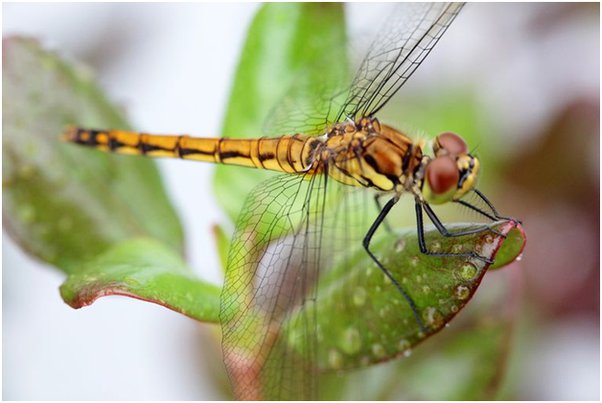
How did the dragonfly get its name and its origin?
Although I partially understand the scientific Name description and meaning, and I have found some folklore googling, But I was curious if anyone here knows the true meaning of its name and if there is any truth to its folklore and myth about St George’s horse. I am doing a study for facts on the dragonfly for an article.
I haven’t seen anything about the folklore behind the origins of the word.
The idea of the dragon has itself evolved from basically a serpent into the fire-breathing, flying, lizard-like creature familiar today.
I seem to remember reading somewhere that the medieval tales of dragons battled by knights was a kind of allegory on the dangers of evil and the heroism of those who fought it, with Satan taking his reptilian form from the Garden of Eden, and burning with the fires of Hell.
The idea of a flying dragon would therefore be pretty recent, and in fact, I believe the word dragonfly only goes back to perhaps the 1600s. Looking briefly at a few other Western European languages, I see mostly forms based on the Latin word libellula.
As for the idea of the dragonfly as St George’s steed: that sounds like the kind of cute “folklore” that the Victorian English loved to come up with, along with gossamer fairies and the like (though “A Midsummer Night’s Dream” shows that some things of that nature were around before then).
One piece of folklore that does seem to ring true is the “Devil’s Darning Needle”, a name used to frighten small children with the threat of having their mouths sewn shut if they misbehaved.

